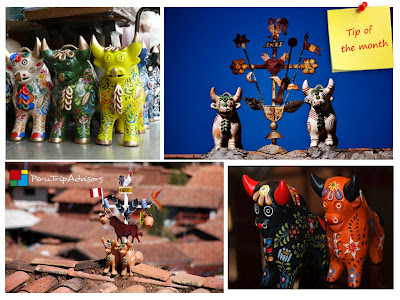Many of the most important
attractions of Peru are located over the 7,000 feet like Arequipa city (7,600 ft.),
Colca Canyon (12,000 ft.), Titicaca Lake (12,560 ft.), Cusco city (10,800 ft.)
or Machu Picchu (7,970 ft.) and tourist always hear about terrible tales of high altitude sickness.
It’s difficult to determine who may be affected by
altitude sickness since there are no specific factors such as age, sex, or
physical condition that correlate with susceptibility. Some people get it and
some people don't because some people are more susceptible than others.
Most people can ascend to 8,000 feet with little or no effect. If you
have been at that altitude before with no problem, you can probably return to
that altitude without problems as long as you are properly acclimatized.
If you haven't been to high altitude before and plan a trip to Peru, let us recommend you the following 3 tips:
If you haven't been to high altitude before and plan a trip to Peru, let us recommend you the following 3 tips:
1. TAKE IT EASY
The main cause
of altitude sickness is going too high too quickly. Given enough time, your
body will adapt to the decrease in oxygen at a specific altitude. This process
is known as acclimatization and generally takes one to three days at any given
altitude. Remember that light activity during the day is better than sleeping
because respiration decreases during sleep, exacerbating the symptoms. Take
time to rest, don’t over exert yourself.
2. HYDRATATE
Acclimatization is often accompanied by fluid loss, so you need to drink lots of fluids to remain properly hydrated (at least four to six liters per day). Water or beverages as Gatorade are the best options.
Acclimatization is often accompanied by fluid loss, so you need to drink lots of fluids to remain properly hydrated (at least four to six liters per day). Water or beverages as Gatorade are the best options.
3. EAT LIGHT
The first day(s) stay away from grease food,
sodas and alcohol. Consider eating chicken grill, chicken noodle soup, cooked
salads. Eat high calories.
There are some other tips
like drink coca tea once you arrive in the high altitude, take a pill named “Soroche
pill” the night before your trip, the morning before and the night of your first
day in the altitude and eat lemon candies.
We recommend you to follow all these advices but specially relax to enjoy
your trip!
PERU TRIP ADVISORS
Web form powered by 123ContactForm.com | Report abuse







